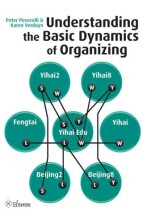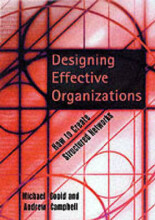Ravasi: Responding to organizational identity threats: exploring the role of organizational culture
15 important questions on Ravasi: Responding to organizational identity threats: exploring the role of organizational culture
Ravasi presents a longitudinal study of organizational responses to environmental changes that induce members to question aspects of their organization's identity. What are the findings of this study? And what is developed?
2. Ravasi developed a theoretical framework for understanding how the interplay of construed images and organizational culture shapes changes in institutional claims and shared understandings about the identity of an organization.
The broad scope of Ravasi's study helped to link constructs such as identity claims, construed external images, organizational culture, desired external images and desired identity. What is examined?
Which two lines thought on organizational identity? (Ravasi)
2 Social constructivist perspective
- Higher grades + faster learning
- Never study anything twice
- 100% sure, 100% understanding
Summarize the thoughts of the social actor perspective (Ravasi)?
Explain what organizational identities do according to Ravasi:
-The provide the context within which members interpret and assign profound meaning to surface-level behavior. Taking the idea that organizational culture acts as a context for sensemaking efforts.
Repeat the 5 organizational responses on identity threat (Ravasi)
2. Reflecting on cultural practices and artifacts (how do we see ourselves?)
3. Revision of identity claims (how do we want others to see us now?)
4. Projecting desired images (example: developing new slogans)
5. Embedding claims in organizational culture (new identity is cultivated within the organization through f.e. seminars).
The study of Ravasi explored organizational responses to environmental changes and shifting external representation that induced members to reflect on their organization's recent and prospective course of action to ask: what is this organization really about? What do the findings of Ravasi highlight?
2. Organizational culture as a central construct in understanding the evolution of organizational identities in the face of environmental changes.
3. The role of culture in preserving a sense of distinctiveness and continuity as organizational identity is subjected to explicit reevaluation.
Describe step 5: embedding claims in organizational culture (Ravasi)
Describe stage 4: projecting desired images (Ravasi)
Describe stage 2: reflecting on cultural practices and artifacts and stage 3: revision of identity claims (Ravasi)
3: The revision as is the manifestation of adjustments in the shared understanding of organizational leaders. The reformulation of identity claims was then followed by a sensegiving phase.
Describe stage 1: construing external images: (Ravasi)
According to Ravasi both perspectives (social actor and social constructionist) are important. What is the main difference between them?
Explain how the social constructionist perspective sees organizational identity (Ravasi)
1. Central and relatively permanent organizational features, that distinguish the organization from others
2. Shared interpretive schemes that members collectively construct in order to provide meaning to their experience
3. Sensemaking: substantial organizational changes tend to require alteration in the way members interpret what is central and distinctive about their organization: develop new interpretations of what their organization is about.
Describe the difference between the institutional view and the collective view? (Ravasi)
-Collective: social constructionist view. Concentrate on shared emergent beliefs about central and distinctive features of an organization what we could call: identity understandings.
What is organizational culture? (Ravasi)
Tacit assumptions and beliefs, expressed in a web of (in)formal practices and of visual/verbal/material artifacts, which represent the most visible, tangible and audible elements of the culture of an organization.
The question on the page originate from the summary of the following study material:
- A unique study and practice tool
- Never study anything twice again
- Get the grades you hope for
- 100% sure, 100% understanding






























